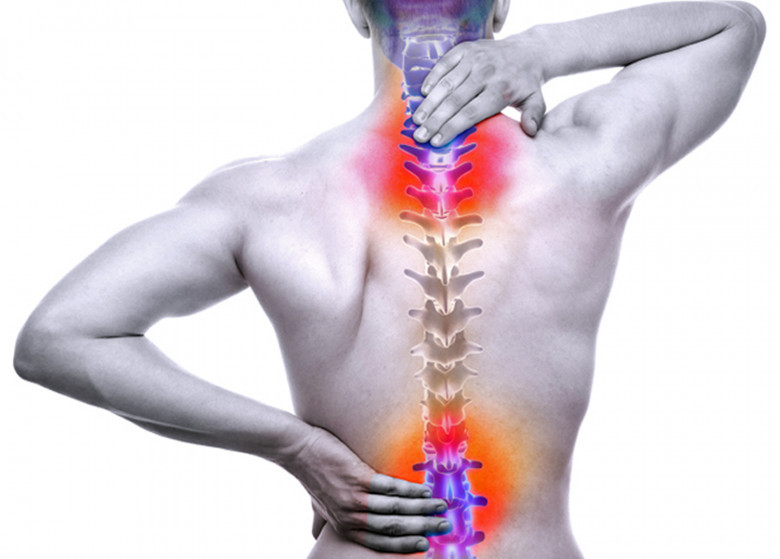views
Workplace safety is a fundamental responsibility for both employers and employees, particularly when it comes to avoiding severe injuries like those affecting the spine. With rising cases of spinal cord injuries in Dubai(إصابات الحبل الشوكي في دبي), especially in high-risk sectors such as construction, logistics, and transportation, businesses are being urged to adopt stronger safety measures. Prevention strategies, ergonomic improvements, and worker education are proving essential in minimizing spinal-related incidents on the job.
From heavy lifting errors to slip-and-fall accidents, spinal trauma can occur in any environment—making awareness and preparedness key to prevention.

Understanding Workplace-Related Spinal Injuries:
Spinal injuries at work are often the result of direct trauma, repetitive strain, or improper handling techniques. These incidents can range from herniated discs and vertebral fractures to complete spinal cord damage.
Common Workplace Injury Causes:
-
Manual lifting of heavy items without proper support
-
Falls from heights, ladders, or scaffolding
-
Slips and trips in wet or cluttered areas
-
Vehicle collisions involving forklifts or transport equipment
-
Improper posture over extended periods at desks or machinery
Employers must assess the specific risks in their industry and work environment to apply the most effective safety protocols.
High-Risk Industries and Roles:
Certain occupations are more prone to spinal injuries due to the physical nature of the work. Awareness in these roles is vital for prevention and early response.
Sectors with Elevated Risk:
-
Construction workers: Frequent use of scaffolding and lifting equipment
-
Warehouse staff: Repetitive bending and handling of inventory
-
Delivery drivers: Prolonged sitting and loading tasks
-
Office workers: Risk of spinal strain from poor ergonomic setups
-
Healthcare professionals: Frequent patient transfers and physical labor
Customized safety training in these industries significantly reduces the rate of injury.
Ergonomic Workplace Design:
Proper workplace ergonomics play a critical role in reducing spinal strain. Whether it's a construction site or a corporate office, layout and equipment make a difference.
Ergonomic Best Practices:
-
Adjustable chairs and desks that support spine alignment
-
Monitor placement at eye level to avoid neck strain
-
Footrests and lumbar supports for extended sitting
-
Proper lighting to reduce awkward postures
-
Anti-fatigue mats for standing workstations
Dubai-based companies are increasingly adopting global ergonomic standards to improve employee well-being and reduce medical costs.
Lifting Techniques That Prevent Injury:
Improper lifting is one of the top causes of spinal trauma in manual labor environments. Teaching and reinforcing correct methods can drastically reduce these incidents.
Safe Lifting Guidelines:
-
Bend the knees, not the back
-
Keep loads close to your body’s center
-
Avoid twisting while lifting or carrying
-
Lift gradually using leg muscles
-
Seek help with oversized or heavy items
Using mechanical aids such as trolleys or forklifts whenever possible also reduces human strain.
Fall Prevention Strategies:
Falls from elevated workstations or slick surfaces are common sources of spinal injury(إصابات الحبل الشوكي). Implementing fall prevention protocols protects workers at every level.
Effective Fall Prevention Measures:
-
Install guardrails on platforms and staircases
-
Require harnesses and fall protection gear on elevated jobs
-
Keep walkways clear and dry at all times
-
Use high-traction flooring in moisture-prone areas
-
Ensure proper ladder training and inspections
Strict adherence to these measures is mandatory under Dubai’s occupational safety regulations.
Creating a Culture of Safety:
A proactive safety culture helps identify risks before they result in injury. Open communication, regular training, and accountability are central to this effort.
Building a Safety-First Environment:
-
Conduct regular safety drills and simulations
-
Hold monthly safety briefings and toolbox talks
-
Encourage incident reporting without fear of reprisal
-
Recognize and reward safe practices on the job
-
Involve employees in risk assessments and feedback
Businesses in Dubai that foster a culture of safety experience fewer workplace accidents and higher employee satisfaction.
Employer Responsibilities Under UAE Law:
In the UAE, employers are legally responsible for providing safe work conditions and mitigating health risks. Non-compliance can lead to penalties and loss of business licenses.
Legal Safety Obligations:
-
Maintain safe premises with risk assessments
-
Provide personal protective equipment (PPE) when required
-
Offer ongoing training on injury prevention
-
Ensure access to emergency response services
-
Comply with Dubai Municipality and MOHRE guidelines
Proper documentation and adherence to these laws protect both the business and its workforce from legal and financial repercussions.
Immediate Response to Workplace Spinal Injuries:
If a spinal injury occurs, how the situation is handled in the first few minutes can influence the outcome significantly. Workers should be trained to respond appropriately.
Emergency Response Protocol:
-
Do not move the injured person unless in immediate danger
-
Call emergency medical services right away
-
Stabilize the neck and spine if possible
-
Keep the person calm and immobile until help arrives
-
Provide clear information to responders about the accident
Many companies in Dubai now include spinal injury scenarios in their first-aid and safety training programs.
Final Thoughts:
Preventing spinal injuries in the workplace requires more than just checklists—it demands a cultural commitment to safety, accountability, and continuous improvement. With smart design, clear communication, and proper training, employers can drastically reduce the risk of serious incidents.
As awareness of spinal cord injuries in Dubai continues to grow, so does the city’s commitment to occupational safety. A well-informed workforce is the most powerful tool in protecting the spine—and the lives—of employees across every sector.



Comments
0 comment